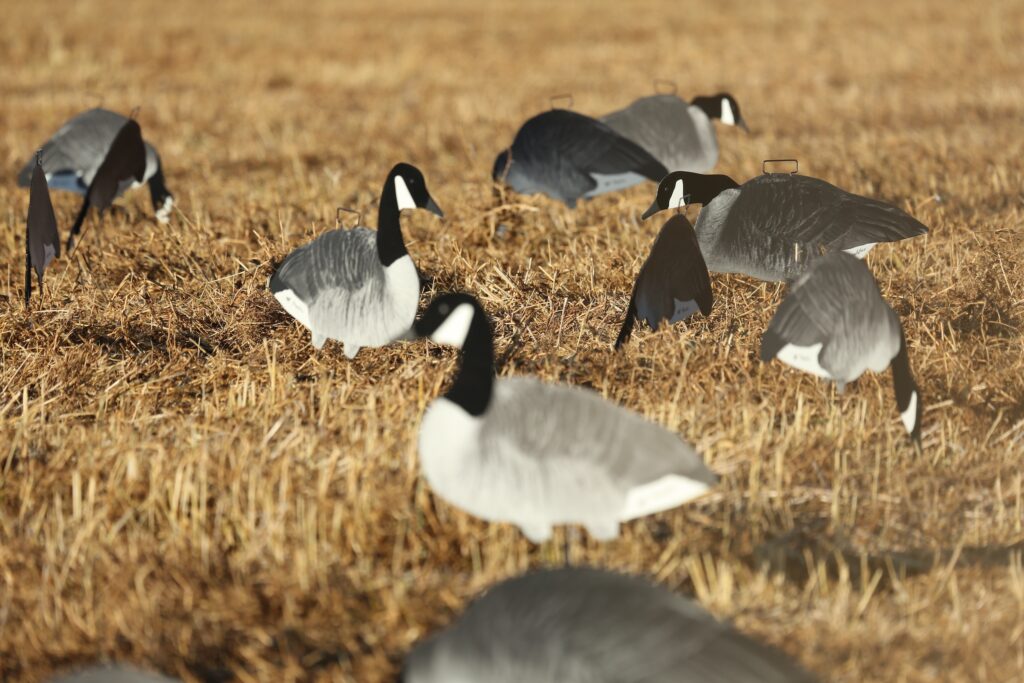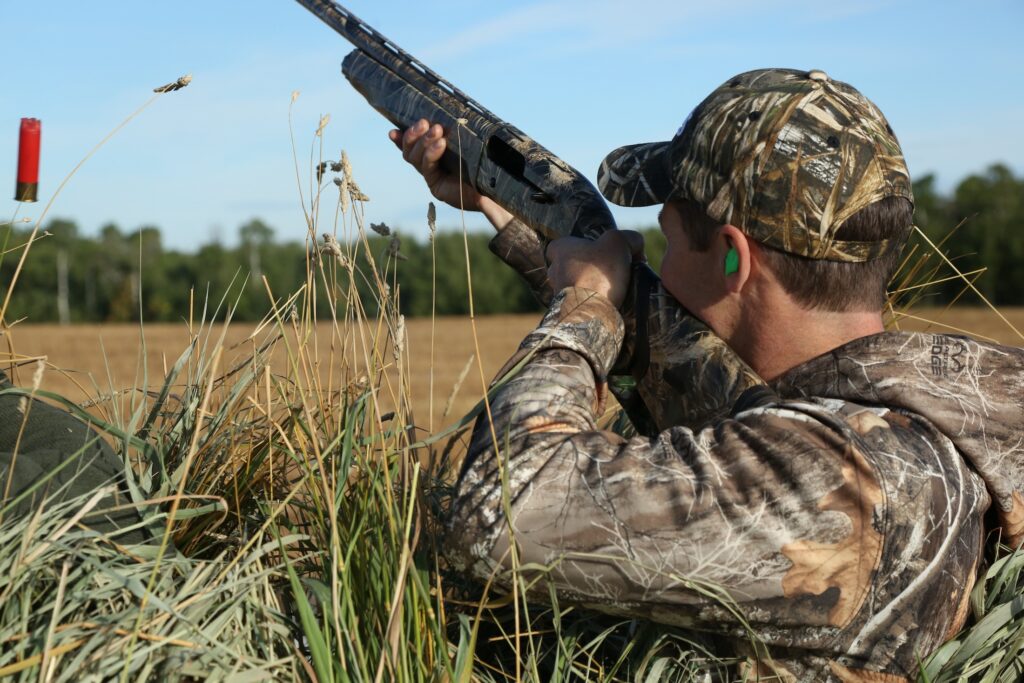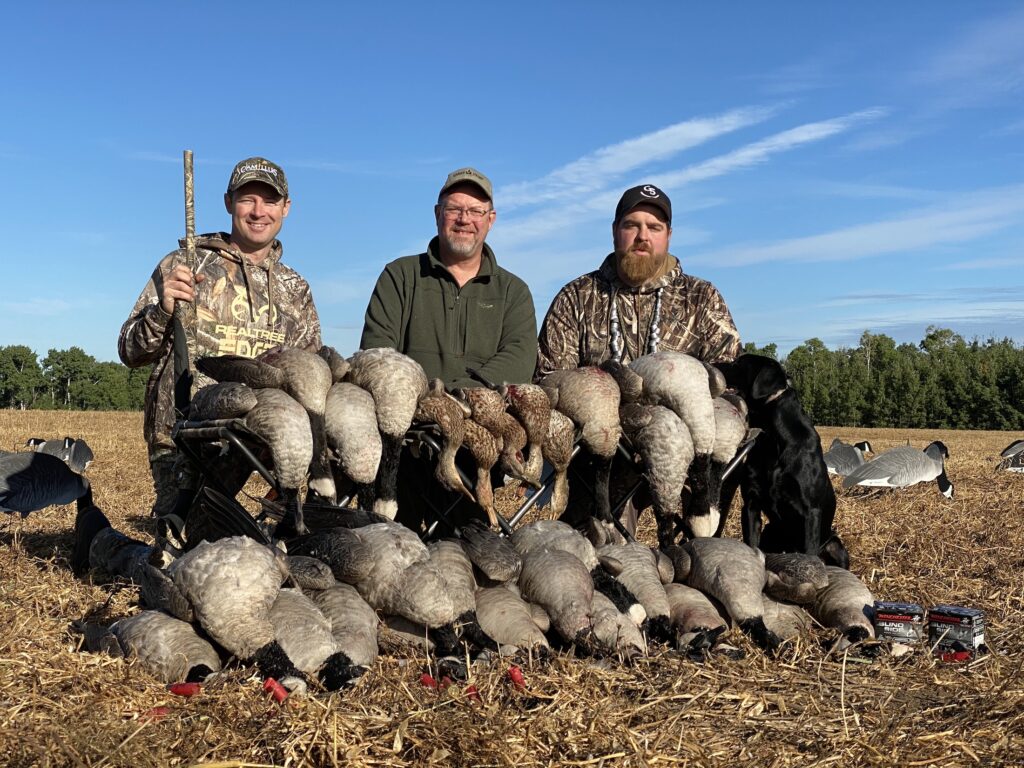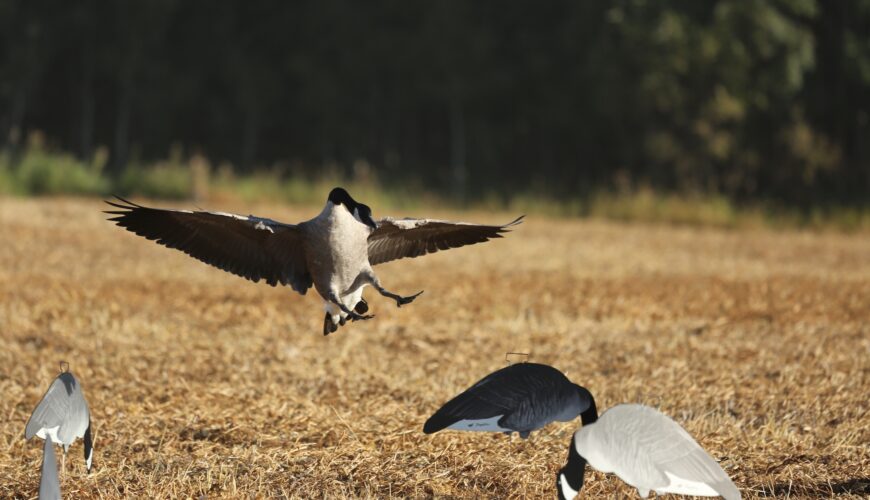Tactics
Sporting Clays Technique: How To Deal With Teal
November 24, 2025 •Mark Chesnut
September 10, 2025
The first hunts of fall often begin with the thundering wing beats of Canada geese sweeping into fields, a sound that sends a jolt of excitement through waterfowlers eager to shake off the summer rust. Early-season geese are not easy targets, though. Even family groups of honkers are wary, and hunters who hope for consistent success need to do more than just set out a few decoys and blow a call.
Guides like Rob Reynolds of Ranchland Outfitters and Tyler Mann of Saskatchewan Goose Company stress that the best decoy spreads in September mimic what hunters see in the field when spotting. At this time of year, geese travel in tight-knit family groups of eight to 14 birds. Small pods of decoys set in family formations, with one or two sentries in each group, mirror what geese expect to see. The birds are feeding cautiously, and a realistic spread can make the difference between a pass and a committed approach.

In early season, set small decoy spreads in family groups of eight to 14 birds. Brad Fenson Photo
Hunters can be tempted to call aggressively, but early-season geese often do the calling for you. Young honkers are noisy and excitable, filling the air with chatter. A few well-timed clucks and moans can reassure incoming flocks, while restraint keeps the spread sounding natural. If only a few birds are taken from a flock, comeback calls can be highly effective, especially if one or both adult geese were dropped. Juveniles will often circle back to investigate.
Concealment is critical, but experts agree that in the early season, hunters should keep things simple. Use natural cover from the field itself, blend in and avoid overcomplicating the hide. Flashy tricks should be saved for later in the season when birds have grown suspicious from repeated pressure. Early on, subtle and natural is better.

Use natural cover to blend into the field cover and make in-range shots over your decoy spread. Brad Fenson Photo
Perhaps the greatest advantage hunters have in the early season is how predictable geese can be. Birds will often return to the same fields as long as food remains plentiful. Morning hunts typically bring steady flights, while afternoons and evenings produce staggered movements. Successful hunters scout both times of day, taking note of not just where the geese are feeding, but also when the best options are for setting up and being successful.
The best advice from seasoned guides is to resist the urge to do too much. Overcomplicated spreads and excessive calling may reduce success. By staying true to what birds are naturally doing on the landscape, hunters can stack the odds in their favor.
Early-season goose hunting is a balance of preparation, observation and restraint. Hunters who pay attention to details in decoy placement, calling and concealment often find themselves with honkers finishing close, wings cupped, feet down and offering those unforgettable first shots of a new season.
The lessons learned in September carry forward into October and November, where geese become warier and spreads need to adapt. For now, though, keeping it simple and hunting like a goose thinks will give hunters the best chance at early-season success.

Simple spreads, minimal calling and natural setups work best when early season goose hunting. Brad Fenson Photo
